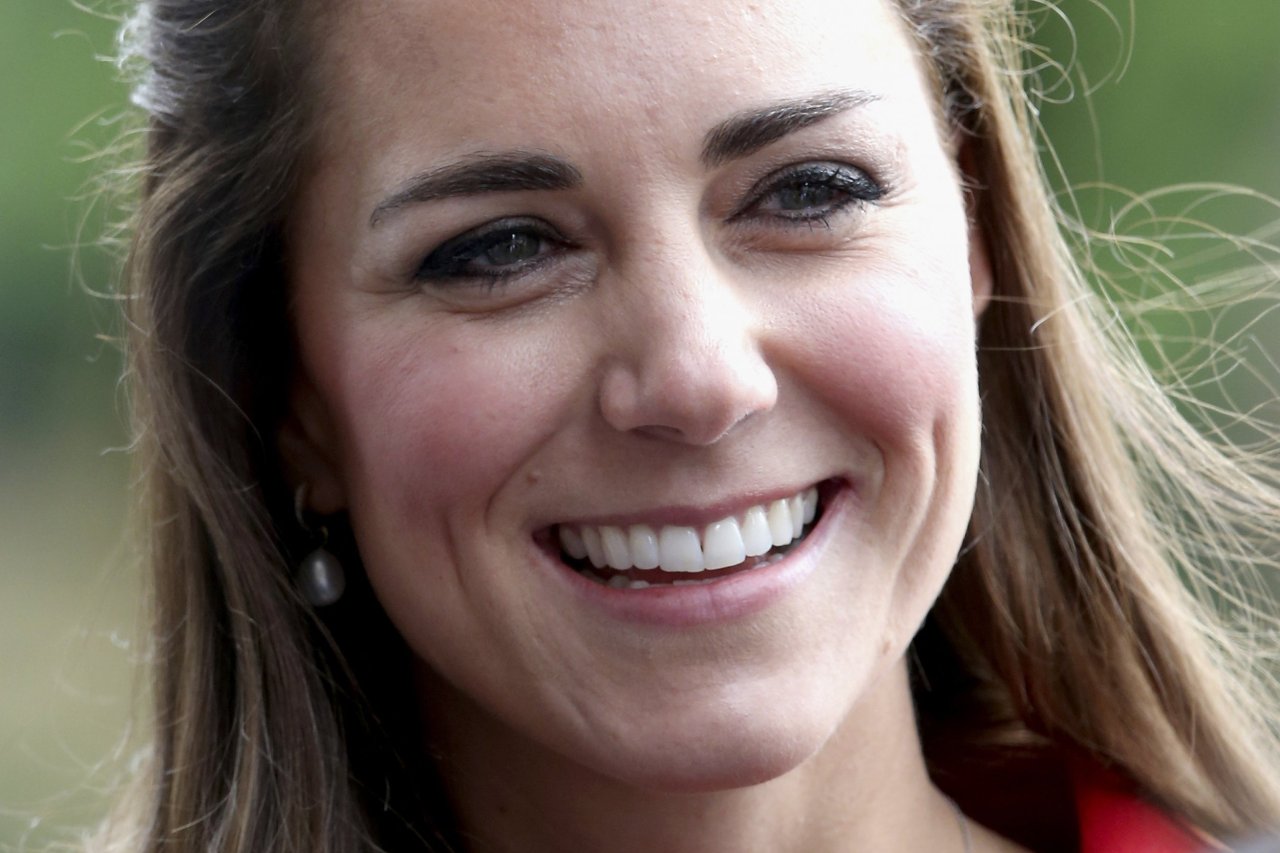For decades, Britons have been notorious for the state of their teeth. Even in Mexico, bad or crooked teeth are known as dientes Ingles. And not without reason. In surveys of OECD countries, the only ones with more cavities than the UK are Turkey and... Mexico. (Hah!) Although it's the sixth largest economy in the world, Britain consistently hovers around the middle of Europe's dental-health tables. If the health of one's ivories equates with their beauty, the average British mouthful must be deemed a thing of horror.
How is it, then, that the world's most famous smile – belonging to the Duchess of Cambridge, and formed in very British Berkshire – contains not one crown or veneer; or that some of the kingdom's finest thespian exports (Emma Watson, Daniel Radcliffe, Colin Firth) remain un-'done'?
The answer is a trend towards the New Natural. Not in the sense of "as nature intended," but quasi-natural. The best analogy might be a house. We might consult an interior decorator to help with colours and textiles. But we don't want a house to look as if there was a decorator. It's the same with teeth. Welcome to the world of orthodontics-light where your dentist is merely nature's little helper.
According to a recent report in The Times, in the new age of austerity, Britons are not only experiencing an increasing gap in wealth, but in its dental manifestations. Once it was a status symbol to have wonky smiles corrected by filing down the offending teeth and either capping them or bonding to them porcelain veneers. But now, it appears, people score points by making minute adjustments to the originals.
To have too flash a set of gnashers is, to use Alan Clark's immortal put-down, like buying your own furniture. A wall of unnatural white, which must be renewed and maintained at some expense and risk, betrays a lack of sophistication.
Consider this. Having all our teeth safely replaced in London will cost upward of £30,000. As gums recede with age, we will need to repeat the process after ten to 20 years. And despite dentists' best efforts, bacteria can later enter caps or be trapped during fitting (which can lead to root canal infection and even more work).
Then ask – as the Duchess of Cambridge must – why don't you just micro-rotate? With a few trips to the Wimpole Street rooms of her French lingual orthodontist, Dr Didier Fillion (the world's best in his field) we can achieve a classier result than any amount of fakery, but for less than half the price.
And why wouldn't anyone align their teeth – even manipulate them to combat the effects of ageing – if they could do it with Fillion's "invisible braces"?
Orthodentist to John Galliano and the King of Morocco, 71-year-old Fillion is "lingual" because he works on the tongue (rather than cheek) side of the teeth. And his speciality is to bond braces to the back of the latter, so that they can be pushed and pulled into alignment. Using the same technique, he can also ameliorate the "black corridors" that wide-smiled people sometimes display on either side – and he can counteract the tendency of teeth to "tip inwards" with age.
This is one of the effects of muscle loss in the face. The nose also droops and the chin drops, while the top lip thins and falls backward – all -contributing to a "Mr Punch" profile.
The basic principles of micro-rotation have been around for 40 years. Developed by a Beverly Hills dentist called Craven Kurz, it was conceived as a more aesthetic alternative to "train tracks" on the front of teeth, and only failed to catch on because it took up mouth-space for several months.
In the city of dreams, in the go-ahead culture of the quick fix, people preferred the artificial route, even when their crowns were bleached beyond reason. (Teeth yellow in middle age – so, while a 30-year-old can carry off a teenager's smile, it begins to look inappropriate on a 50-year-old.)
However, linguistic orthodontics lingered and, in time, the technology improved. Dr Fillion, who had been an early adopter in Europe, rediscovered his vocation. And now – using computer modelling, 3-D printing and the like – he can have the braces in and out in a few weeks, merely shaving the side of a tooth here and there, if necessary.
The new alignments are then held in place by a fixed retainer, whose continued use is reviewed after three years. And the result, says Fillion, is teeth "adapted to a personality". For example, he has noticed a growing tendency in European women (and most of his clients are women) to keep gaps between upper incisors that once they would have closed.
This trend towards the natural has not been entirely voluntary on the patient's part. Under European law, for example, teeth can't be professionally whitened with the same strength of bleaching agent that they use in the States.
However, it has its parallels in the world of cosmetic surgery and enhancement. Just as Dr Fillion tries to avoid any invasion of the gums, so cosmetic doctors such as Daniel Sister (another Frenchman in London) are constantly trying to develop ways of working with the available material. Using serum and vitamins, Dr Sister tries to reactivate wasted facial muscle, so that the skin tightens itself. Among his high-end clients, he says, "fewer and fewer are asking for the over-filled look that comes from too much surgery or overdoing injectables. That hard, stretched-to-the-limit look is going out of fashion. Tastes are changing."
And of course, this shift may be simply a matter of taste. Or is there a compelling argument for the natural over the artificial, the quirky blemish of a beauty spot over flawless facial symmetry?
Step forward John Hyman, Professor of Aesthetics at Oxford University, who suggests we first look to Pythagoras. In the sixth century BC, the Greek philosopher proposed there was innate beauty in certain proportions, giving the example of a musical chord. But, says the professor, "just because a sonata is in A Minor, you can't say it is therefore beautiful, even if it's by Mozart."
True, there seems to be some evolutionary preference for symmetry and regularity in the human face, for breeding reasons, but that doesn't necessarily negate subjective and learned responses – "and they are inevitable in any interaction between two adults."
"The thing is, we can hold more than one value – we can appreciate both familiarity and spontaneity, formality and informality."
Beauty, then, lies in the eye of the beholder. But tell that to a high-end mouth, yearning to look like Kate Middleton's.
Uneasy must be the tooth that wears the crown. The Brits are biting back.































